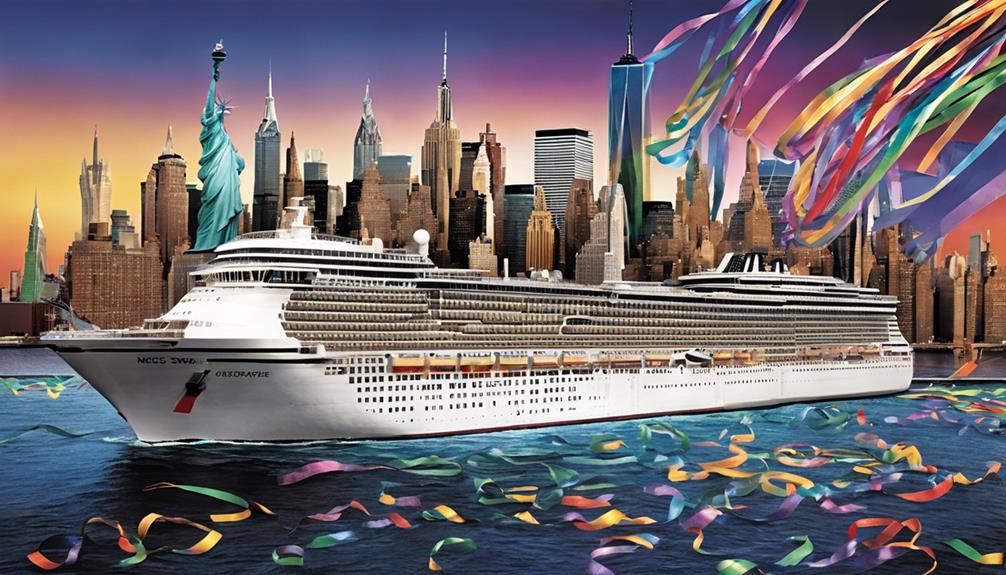Picture yourself cruising down a lengthy expanse of freeway, advancing effortlessly towards your destination. The road unfolds before you, beckoning invitingly, and with the mere press of a button, your car takes over the driving. Such is the wonder of cruise control.
In this article, I will delve into the history, mechanics, and benefits of using this ingenious invention. Prepare to learn the truth behind common misconceptions and discover essential tips for using cruise control safely.
Let’s embark on this journey together.
Key Takeaways
- Cruise control was introduced in the 1950s and has since become a standard feature in many vehicles.
- Cruise control technology has evolved from mechanical components and vacuum systems to advanced electronic systems with radar sensors and potential integration of artificial intelligence and machine learning algorithms.
- Using cruise control can provide a relaxing driving experience, maintain a consistent speed, improve fuel efficiency, reduce driver fatigue, and enhance control over the vehicle.
- Common misconceptions about cruise control include giving up control of the vehicle, safe usage in heavy traffic, and optimizing fuel efficiency. It is important to set a safe speed, pay attention to surroundings, be prepared to disengage, and maintain a safe following distance when using cruise control.
History of Cruise Control
Cruise control was first introduced in the 1950s and has since become a standard feature in many vehicles. The evolution of cruise control technology has seen significant advancements, allowing drivers to set a desired speed and maintain it without constant foot pressure on the accelerator pedal.
Initially, cruise control systems relied on mechanical components and vacuum systems to control the throttle. However, with the advent of electronic systems, cruise control became more precise and responsive. This technology has had a significant impact on driving habits, promoting a more relaxed and comfortable driving experience. It has also been shown to improve fuel efficiency by maintaining a consistent speed, reducing unnecessary acceleration and deceleration.
Transitioning into the subsequent section about ‘how cruise control works,’ it is essential to understand the underlying mechanisms that enable this feature.
How Cruise Control Works
To use it, simply set your desired speed and let the system take over.
Cruise control technology advancements have come a long way since its inception. Initially, cruise control systems were basic, maintaining a constant speed without any adaptive features. However, with the advancements in technology, modern cruise control systems now offer adaptive features, such as radar sensors that can adjust the speed based on the distance to the vehicle in front. These systems can even bring the vehicle to a complete stop and resume when the traffic starts moving again.
The future prospects of cruise control are promising, with the potential integration of artificial intelligence and machine learning algorithms to optimize fuel efficiency and enhance safety. With these advancements, cruise control will continue to evolve and offer even more benefits to drivers.
Transitioning into the benefits of using cruise control, it allows for a more relaxed driving experience while maintaining a consistent speed.
Benefits of Using Cruise Control
When using cruise control, you can relax and maintain a consistent speed without worrying about adjusting your speed manually. This feature is especially beneficial for long drives or when driving on highways.
By maintaining a steady speed, cruise control helps to improve fuel efficiency, as it eliminates unnecessary acceleration and deceleration that can waste fuel.
Additionally, using cruise control can reduce driver fatigue. By taking over the task of maintaining speed, it allows the driver to focus more on the road and surroundings, reducing the mental strain that can lead to fatigue.
However, there are some common misconceptions about cruise control that need to be addressed.
Common Misconceptions About Cruise Control
Contrary to popular belief, using cruise control does not mean you are giving up control of your vehicle. In fact, it can be a valuable tool, especially during a road trip, for maintaining a consistent and safe speed on long stretches of highway. Many people have misconceptions about cruise control, assuming it will make them less attentive or responsive. However, when used correctly, cruise control can actually enhance your control over the vehicle. To help you understand the benefits of using cruise control, let’s take a look at the following table:
| Misconceptions | Reality |
|---|---|
| Cruise control makes you less alert | Cruise control allows you to focus more on the road, reducing fatigue |
| Cruise control is only for flat terrain | Cruise control can be used on hilly roads, adjusting the speed as needed |
| Cruise control is not safe in heavy traffic | Cruise control can help maintain a safe following distance and prevent sudden accelerations or decelerations |
| Cruise control increases fuel consumption | Cruise control can help optimize fuel efficiency by maintaining a steady speed |
| Cruise control is only for long drives | Cruise control can be used in any situation where maintaining a constant speed is desired |
Tips for Using Cruise Control Safely
As I engage the feature, I remember to maintain a safe following distance. Cruise control can be a great tool for long drives, providing several advantages.
Here are some tips to use it safely:
- Set a safe speed: Make sure you choose a speed that is suitable for the road conditions and traffic flow.
- Pay attention to surroundings: Even with cruise control engaged, it is crucial to stay alert and aware of your surroundings at all times.
- Be prepared to disengage: Always be ready to disengage cruise control if necessary, such as when approaching traffic or inclement weather.
By following these precautions, you can safely enjoy the benefits of cruise control, such as reducing fatigue on long trips and maintaining a consistent speed.
Frequently Asked Questions
Can Cruise Control Be Used in All Types of Vehicles?
Yes, cruise control can be used in all types of vehicles. However, it’s important to consider the pros and cons. On long highway drives, the benefits of using cruise control include reducing fatigue and maintaining a consistent speed.
Is It Possible to Use Cruise Control in Heavy Traffic?
Yes, it is possible to use cruise control in heavy traffic. However, its effectiveness in reducing driver fatigue may vary. Additionally, the impact on overall traffic flow can be influenced by factors such as lane changes and unpredictable behavior of other drivers.
Does Using Cruise Control Increase Fuel Consumption?
Using cruise control can impact the overall driving experience. It’s important to consider fuel efficiency when comparing manual driving to using cruise control. Let’s explore whether cruise control increases fuel consumption.
Can I Use Cruise Control in Bad Weather Conditions?
Using cruise control in heavy rain or snowstorms can be dangerous. It may cause loss of control due to reduced traction and visibility. It is best to avoid using cruise control in these weather conditions for safety reasons.
Are There Any Legal Restrictions on Using Cruise Control?
Legal restrictions on using cruise control vary by jurisdiction and can include speed limits, weather conditions, and specific road signs. Safety concerns and potential legal implications make it crucial to familiarize oneself with local laws before utilizing cruise control.
Conclusion
In conclusion, cruise control is a remarkable technology that has revolutionized the way we drive. It was first introduced in the 1950s as a way to provide convenience and reduce driver fatigue.
By maintaining a consistent speed, cruise control enhances fuel efficiency and reduces the likelihood of speeding tickets. Despite some misconceptions, this system is safe when used correctly and can even improve overall road safety.
So, the next time you hit the road, consider engaging cruise control for a smooth and efficient journey.










